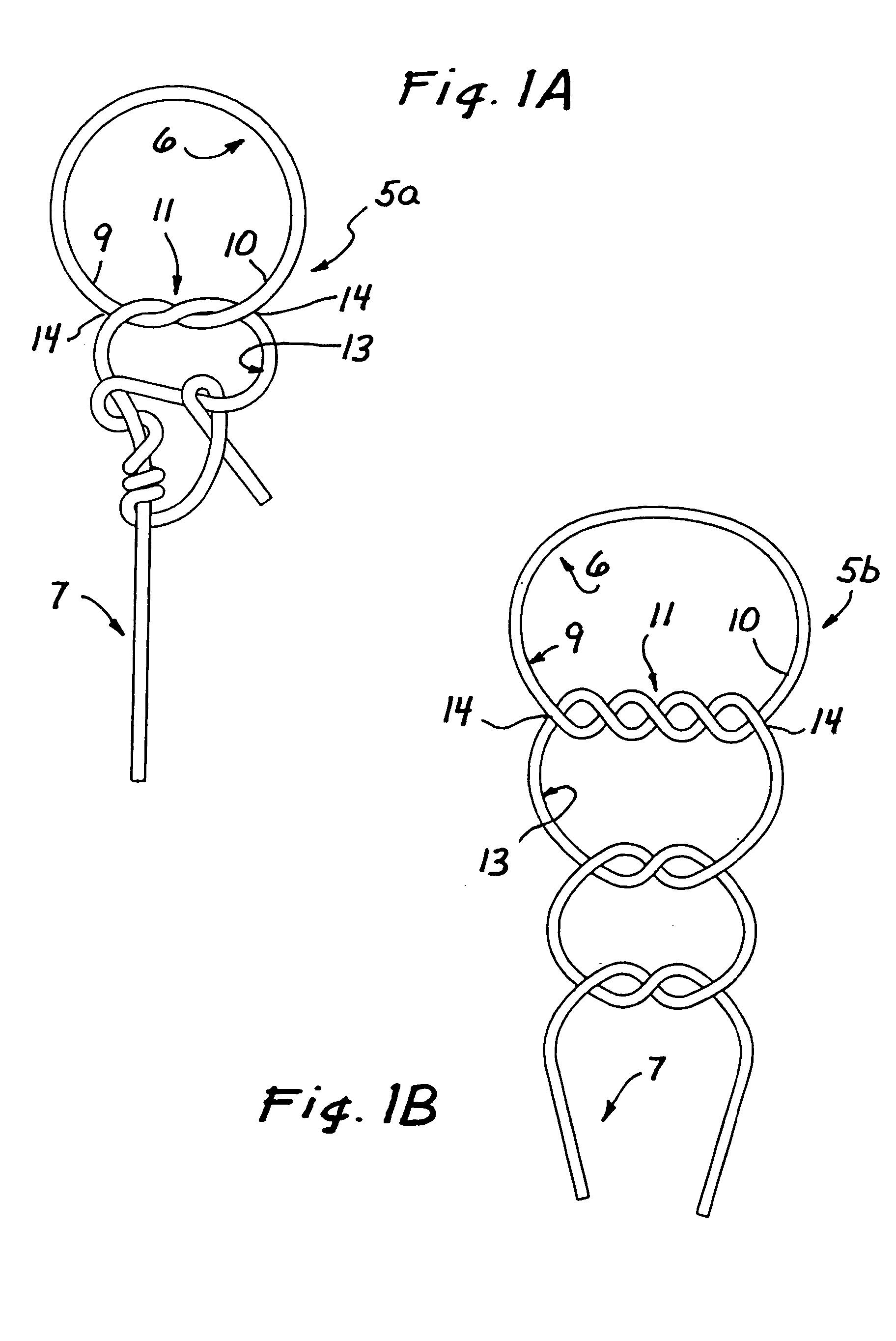Interlocking suture clinch
a technology of interlocking and suture ties, which is applied in the field of clamps and surgical clips, can solve the problems of not making the best use of surgeon's time or skill, requiring valuable time, and tying a secured knot, and achieves the effects of providing stability and security, not putting excessive pressure or stress on the delicate material, and small, sharp details
- Summary
- Abstract
- Description
- Claims
- Application Information
AI Technical Summary
Benefits of technology
Problems solved by technology
Method used
Image
Examples
Embodiment Construction
[0039] FIGS. 1(A) and 1(B) illustrate a complex slip-knot 5a and a multi-throw surgical knot 5b, respectively, used in laparoscopic surgery having an engaging portion 6 and an extending portion 7. The engaging portion 6 passes through a body tissue of a patient to be approximated and the extending portion 7 is secured to hold the engaging portion 6 in place. Most often, the engaging portion 6 comprises a generally circular configuration where portions 9, 10 of the suture that exit the distal end 11 of the tied knots 5a and 5b are nearly one hundred and eighty degrees (180°) apart. The most common configuration presents a cross-pull against either of the knots 5a and 5b. The radius of suture 13 becomes the radius over which the suture 13 must pass. This relationship will be referred to as the radius postulate. Plainly stated the radius postulate says that the radius over which any given suture passes shall be no less than the radius of the suture itself. Extrapolating this principle ...
PUM
 Login to View More
Login to View More Abstract
Description
Claims
Application Information
 Login to View More
Login to View More - R&D
- Intellectual Property
- Life Sciences
- Materials
- Tech Scout
- Unparalleled Data Quality
- Higher Quality Content
- 60% Fewer Hallucinations
Browse by: Latest US Patents, China's latest patents, Technical Efficacy Thesaurus, Application Domain, Technology Topic, Popular Technical Reports.
© 2025 PatSnap. All rights reserved.Legal|Privacy policy|Modern Slavery Act Transparency Statement|Sitemap|About US| Contact US: help@patsnap.com



